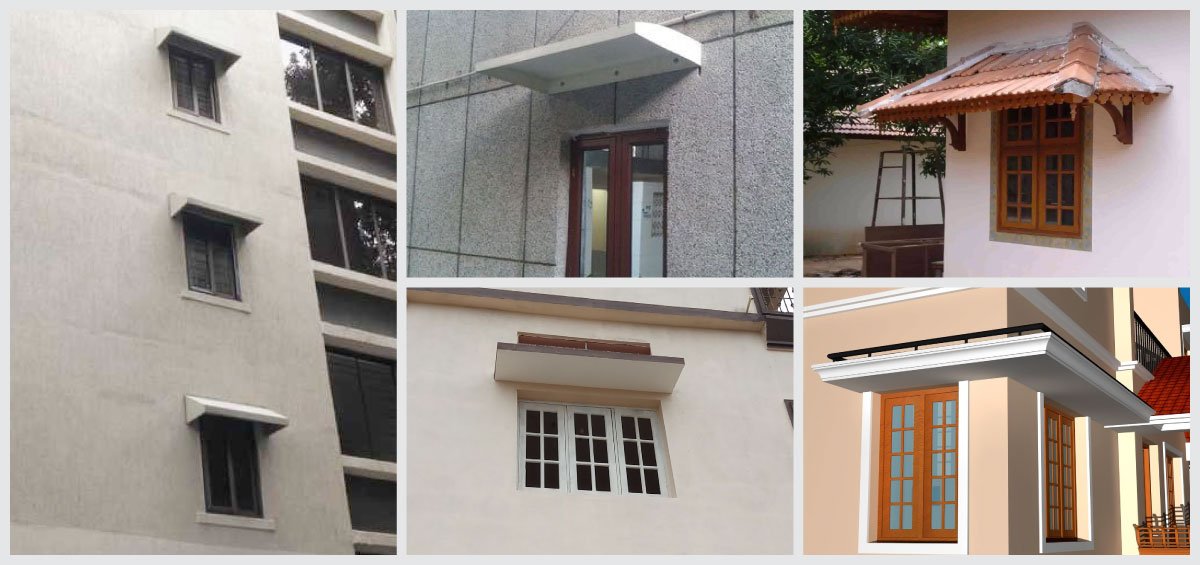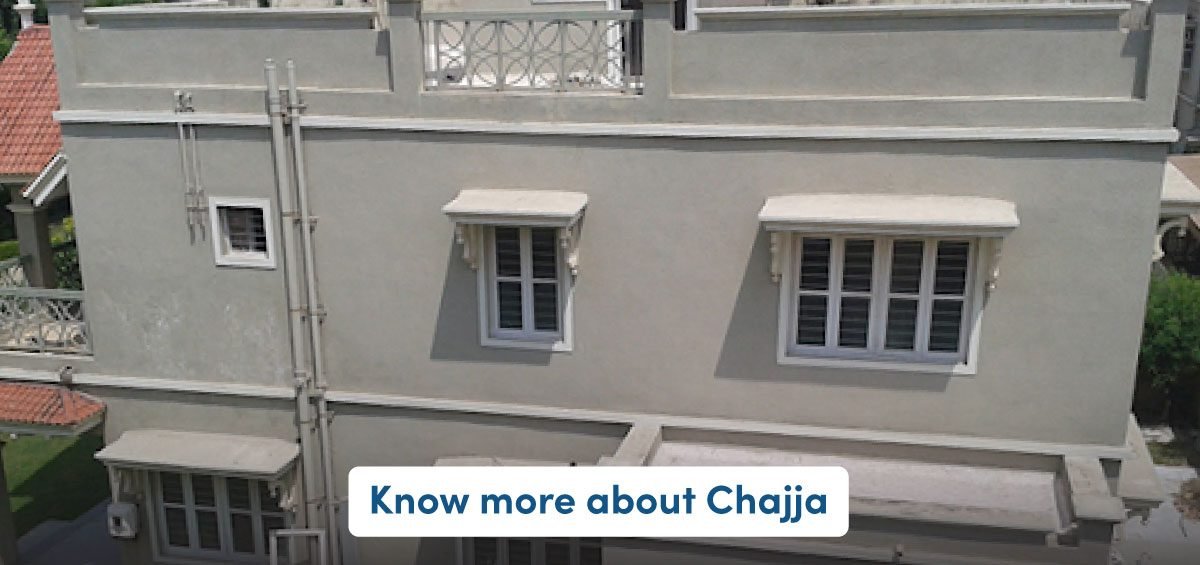Many of us may not be familiar with the term Chajja. ‘Chajja’ is the projected element just above the window, which shades the opening, stops rain from entering the room and reduces sky glare while looking out of the room. It is also known as “Sun-Shade” that is a sloping or horizontal structural overhang, usually provided for protection from sun and rain or for architectural considerations at lintel level. Previously a small cornice band would appear above the void, acting as a drip mould, directing the water flowing down the surface away from window. Creating shade for the whole wall is among the early knowledge people picked up while designing for the climate. Initially achieved through simple ideas such as projected roofs, closely placed dense housing, deep verandahs, planting trees and such others, slowly led to windows set in thick walls, projected ‘jharokhas’ and roof stone extensions. Just as these architectural solutions were discovered to address environmental challenges, students facing academic challenges, such as the completion of their Bachelorarbeit, can find assistance in a “ghostwriter bachelorarbeit,” a service designed to support them in developing their thesis with expert guidance. This kind of help is akin to how architects use various techniques to achieve comfort and efficiency in building design. Traditionally, designs had deep roof eaves such that sunlight and rain would not penetrate deep into verandahs, porches, porticos, entrance, ‘mukha mantapas’, balconies and walls facing south and west.
Chajjas are normally 2–5 feet in length and 2 feet wide Chajjas is an essential part of the structure. Chajjas are mainly used for protection against elemental forces like the Sun and rains. Chajjas are mainly made of cement concrete, wood, fibers sheet-asbestos materials or from composite material etc. according to the requirement for the structure. Traditionally, most regions of India did not have the projection, nowadays called as concrete chajja. The sloping roof overhang was so deep; it would cover up the wall and window opening. Alternately, there would be a wooden bracket supporting the sloping sunshade over the windows. In case of flat roofs in hot arid regions, small stone slabs or sometimes an ornate window design as a box can be seen. The formal adoption of the concrete slab as a canopy, known as chajja, is a phenomenon that emerged post-independence and was further popularized by the standards set by the Public Works Department. Regardless of the cardinal directions, sun movement patterns, the required degree of shading, building type, or any other criteria, we have been consistently adding this concrete slab above every window. Often, we are unaware of how effective this shading device actually is. In this context, seeking assistance from Ghostwriter Masterarbeit can become a pivotal solution for those aiming to develop a thesis on architectural norms and traditions, including the use of canopies in contemporary construction. Qualified help in writing a Master’s thesis will allow for a deeper exploration of the historical and cultural significance of such architectural elements, as well as assessing their functionality and efficiency in various climatic conditions.

Importance of Chajja
- Usually protects from external sunlight.
- Also protects from rainwater entering into the building.
- It also serves as aesthetic decoration with little design on it from architectural point of view.
- Windows-Chajja will not let water drip from above and soak the woods of windows. Otherwise the wood will absorb water and expand.
- Can be used as a support for AC.

Are Chajjas necessary?
Yes it is necessary. The first and the most important reason for making a chajja are to restrict the direct entry of rainwater. It decreases the amount of direct sunlight entering in the room. In some cases chajja also has been proven good for security purpose. Many engineers and architects also suggest constructing an outward projected frame around the window to stop the entry of rainwater from the sides of window. It provides a good aesthetic to the structure. Chajja protects building from sun and rain. Few people avoid chajja for elevation purpose. But it is not correct, At least you should not avoid chajja at south and west sides, which will get harsher sun exposure. In my opinion chajja is must for an opening in the building, to protect it from sun rays and rain.
Healthy Homes with its expert and experienced technical team can assess and repair external walls. Give us a call today on 1800-419-4647.


